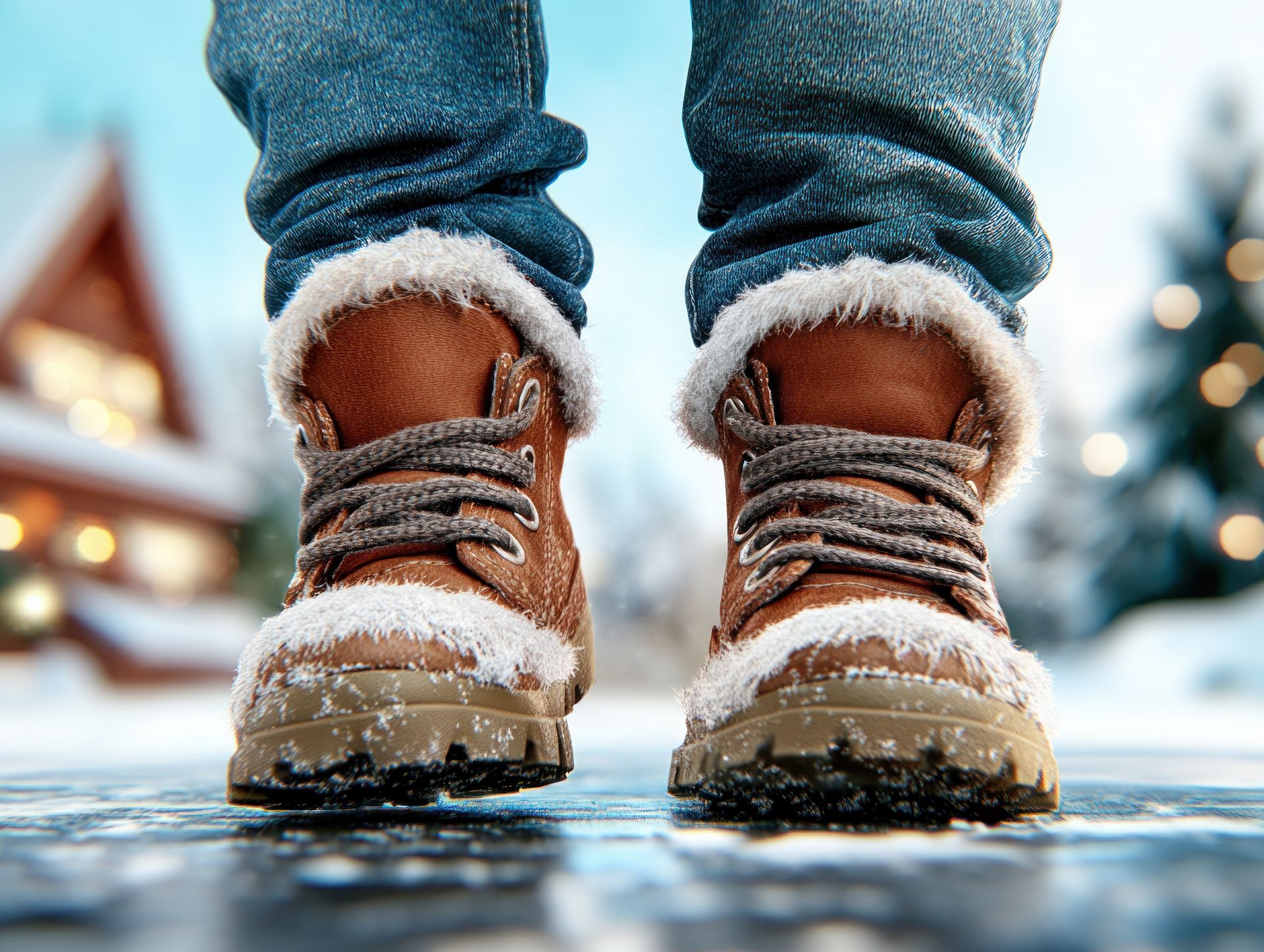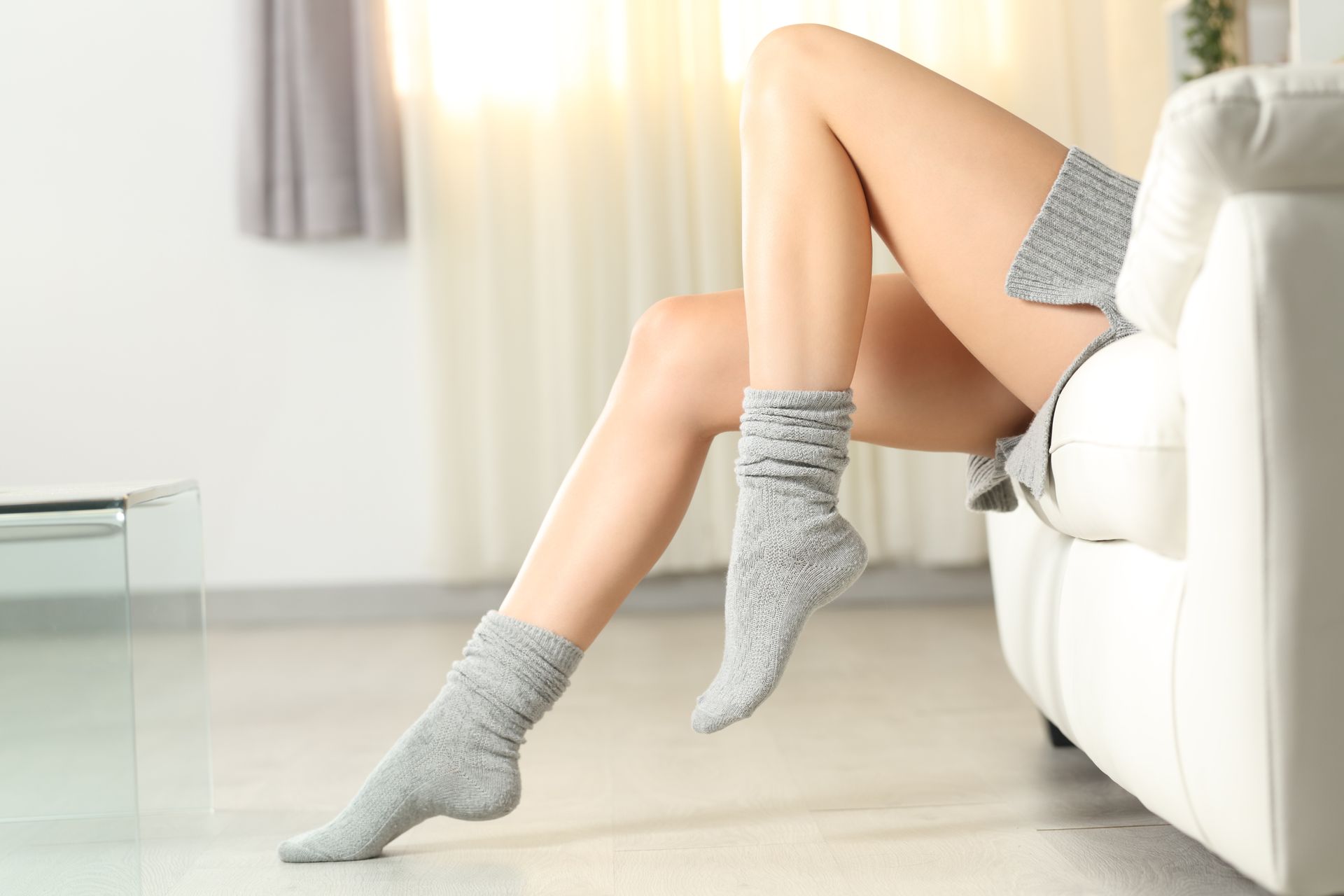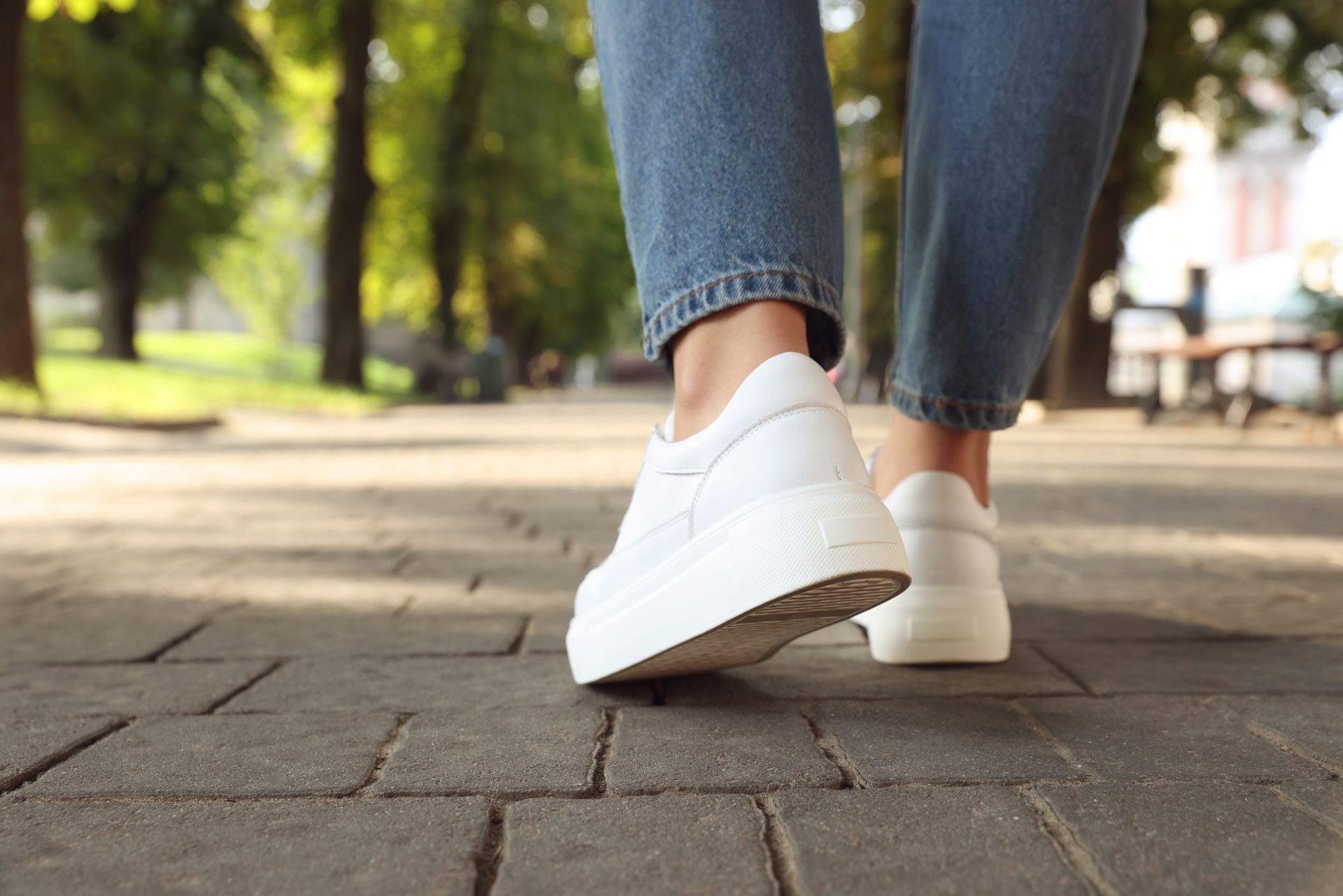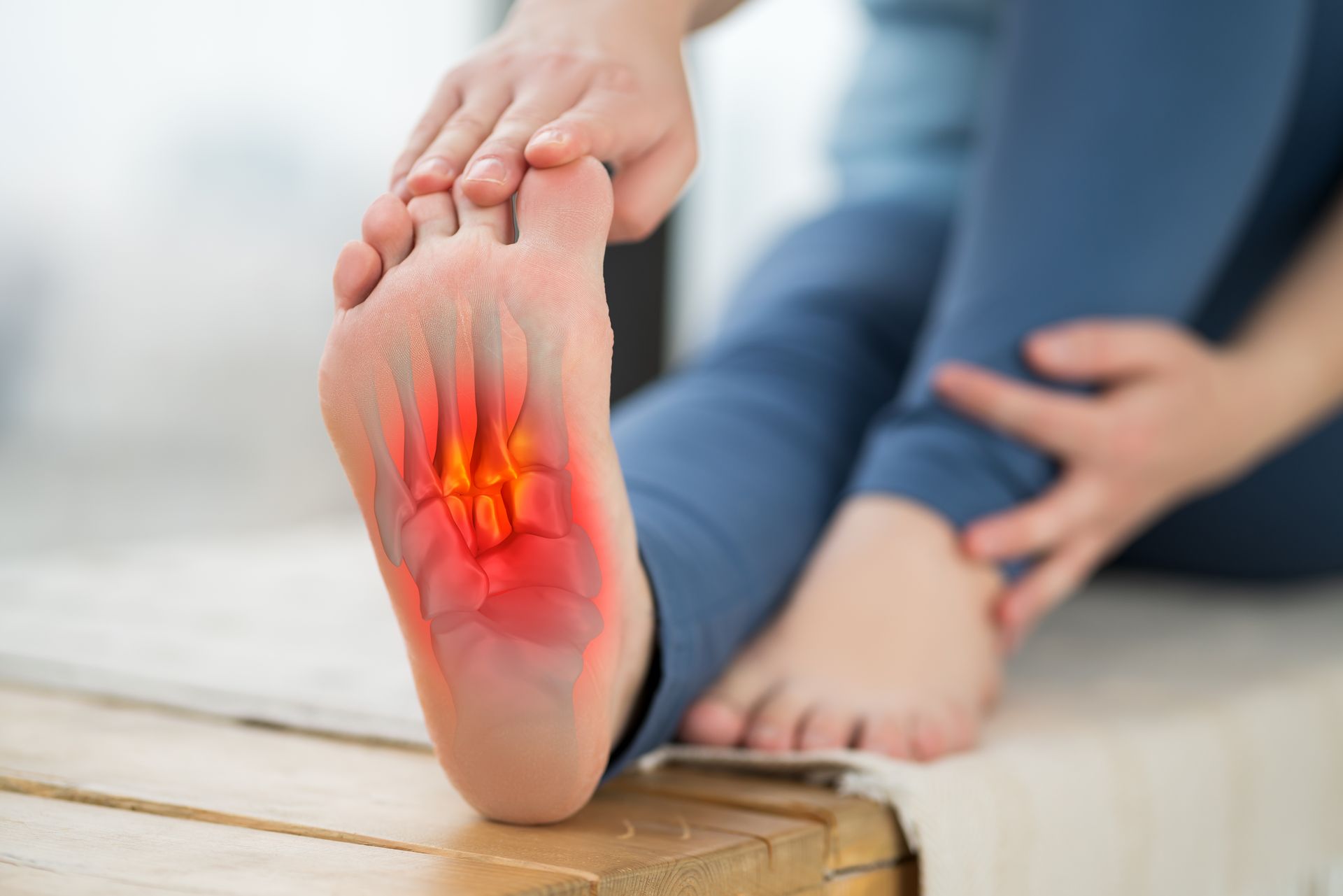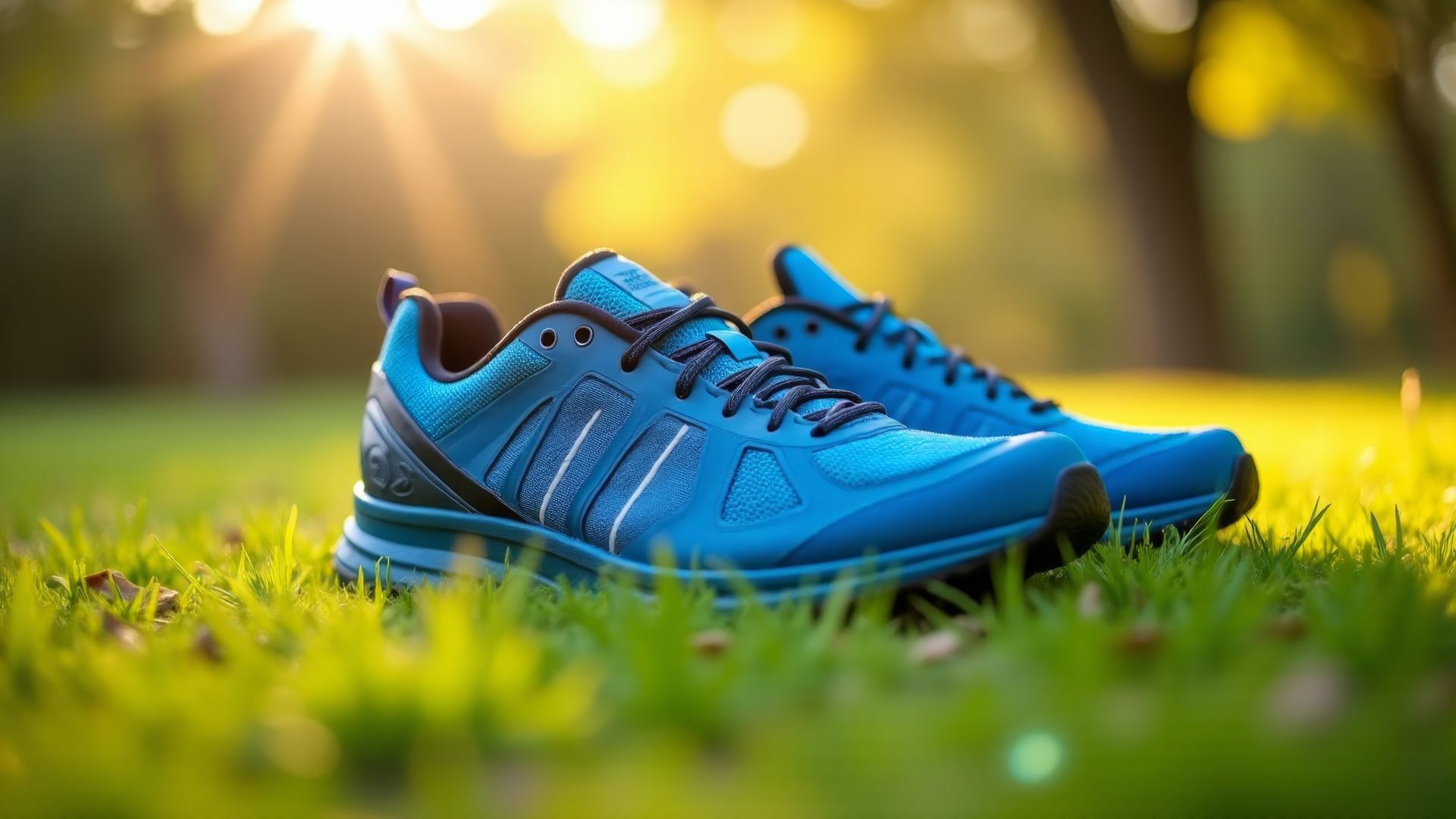Lifestyle Adjustments for Foot Health: Hydration, Skin Care & Nail Care as Weather Cools
Key Points
- Cooler, drier air leads to cracked heels and dehydrated foot skin
- Moisture changes affect nail health and increase fungal infection risk
- Daily foot care routines become critical during seasonal transitions
- Proper moisturizers and protection prevent serious foot problems
- Small lifestyle adjustments make huge differences in foot comfort
- Early intervention prevents minor issues from becoming painful conditions
Every October, I start seeing the same pattern in my Ocala practice. Patients come in complaining about cracked heels, dry skin, and brittle toenails. "Doc, this just started happening," they tell me. But the truth is, these problems didn't start overnight – they've been building since the weather began changing.
Here in Florida, we might not get harsh winters like up north, but our seasonal shifts still affect foot health in ways most people don't realize. The combination of drier air, different footwear choices, and changes in daily routines can wreak havoc on your feet if you're not prepared.
After treating hundreds of patients through these seasonal transitions, I've learned that simple lifestyle adjustments in the fall can prevent most of the foot problems I see in winter. The key is understanding what's happening to your feet and getting ahead of it.
How Cooler Weather Changes Your Feet
Your feet respond to seasonal changes more dramatically than you might expect. During summer, humidity keeps skin naturally moisturized, and open footwear allows constant air circulation. But as the weather cools and we transition to closed shoes, everything changes.
The air becomes drier, even here in Florida. This pulls moisture from your skin, and your feet are particularly vulnerable because the skin there is naturally thicker and produces less oil than other parts of your body.
At the same time, we start wearing socks and closed shoes that create different moisture conditions around our feet. This shift from the breathable summer environment to the enclosed fall environment confuses your feet's natural moisture balance.
I see patients who go from perfectly healthy summer feet to cracked, uncomfortable winter feet without understanding why. The secret is recognizing this transition period and adjusting your foot care routine accordingly.
The Science Behind Seasonal Foot Skin Changes
Your foot skin is unique. It's designed to handle pressure and friction, which means it's naturally thicker and drier than skin elsewhere on your body. During humid summer months, environmental moisture helps keep this skin supple.
But when humidity drops and you start wearing closed footwear, your feet lose moisture faster than they can replace it. The thick skin on your heels and soles becomes dehydrated, leading to cracks and fissures that can be both painful and dangerous.
These cracks aren't just cosmetic issues. They create entry points for bacteria and fungi, potentially leading to infections that require medical treatment. I've seen minor heel cracks turn into serious infections because patients thought dry skin was just a minor annoyance.
The good news is that understanding this process gives you the power to prevent it entirely.
Daily Hydration Strategies for Healthy Feet
Hydration starts from the inside out. Many of my patients are surprised to learn that their overall hydration status directly affects their foot health. When you're dehydrated, your body prioritizes vital organs over skin health, leaving your feet particularly vulnerable to dryness.
Aim for consistent water intake throughout the day rather than trying to drink large amounts at once. Your body can only process so much water at a time, and steady hydration maintains better skin moisture than sporadic large intake.
But internal hydration alone isn't enough during seasonal transitions. Your feet need direct moisture support through proper skincare routines and environmental considerations.
Pay attention to your indoor environment too. Heating systems dry out indoor air significantly, which accelerates moisture loss from your skin. Consider using a humidifier in your bedroom, especially if you notice waking up with dry mouth or skin.
Creating an Effective Fall Foot Care Routine
The best foot care routine is one you'll actually follow consistently. I recommend starting simple and building habits gradually rather than trying to implement a complex routine all at once.
Start by examining your feet daily. This sounds basic, but most people rarely look at their feet carefully. Check for color changes, new growths, cracks, or areas of irritation. Early detection prevents minor issues from becoming major problems.
Washing technique matters more than most people realize. Use lukewarm water rather than hot water, which strips natural oils from your skin. Avoid harsh soaps that can further dry your skin – gentle, moisturizing cleansers work better for foot health.
The timing of your foot care routine can make a big difference in effectiveness. I recommend doing your main foot care routine in the evening, allowing treatments to work overnight when your feet aren't bearing weight or enclosed in shoes.
Choosing the Right Moisturizers for Your Feet
Not all moisturizers are created equal, especially when it comes to foot care. The thick, pressure-bearing skin on your feet needs different treatment than the delicate skin on your face.
Look for moisturizers containing urea, lactic acid, or glycolic acid. These ingredients help break down thick, dry skin while providing moisture. Urea is particularly effective because it both exfoliates and hydrates simultaneously.
Avoid moisturizers with fragrances or alcohol, which can be irritating to already-compromised skin. The goal is healing and protection, not pleasant scents.
For severely dry or cracked heels, consider using a thicker cream or even petroleum-based products overnight. Apply generously and wear cotton socks to prevent transfer to bedding while allowing the treatment to penetrate deeply.
Timing your moisturizer application matters. Apply to slightly damp skin immediately after bathing to lock in moisture. This technique, called "wet skin moisturizing," is significantly more effective than applying to completely dry skin.
Nail Care During Seasonal Transitions
Toenail health changes dramatically with seasonal moisture shifts. During summer, nails may become softer and more pliable. As the weather cools and moisture levels change, nails can become brittle, thick, or develop problems that weren't apparent before.
Proper nail trimming becomes even more important during this transition period. Cut nails straight across, avoiding rounded edges that can lead to ingrown toenails. Use proper nail clippers designed for toenails – they're larger and stronger than fingernail clippers.
File rough edges gently to prevent snagging on socks or shoes. But avoid over-filing, which weakens nails and makes them more susceptible to damage.
Keep nails at a moderate length. Nails that are too short increase ingrown nail risk, while nails that are too long are more likely to break or catch on footwear.
Preventing Fungal Infections in Changing Conditions
Seasonal transitions create perfect conditions for fungal infections. The shift from open summer footwear to closed fall shoes, combined with moisture changes, confuses your feet's natural defense mechanisms.
Fungi thrive in warm, moist environments, and closed shoes provide exactly that. But completely dry conditions aren't the answer either – overly dry skin cracks and provides entry points for infections.
The key is balanced moisture management. Keep feet clean and dry, but not dehydrated. Change socks daily, and if your feet tend to sweat, consider changing socks mid-day during the transition period.
Antifungal powders can be helpful preventively, especially if you've had fungal infections before. Apply to both feet and inside shoes daily during high-risk periods.
Don't ignore early signs of fungal infections. Itching, scaling, or discoloration between toes should be addressed quickly. Early treatment is much more effective than waiting until infections become established.
Protecting Feet from Temperature Changes
Even in Florida, temperature fluctuations can stress your feet. Moving between air-conditioned buildings and warmer outdoor temperatures, or experiencing our occasional cold snaps, requires foot protection strategies.
Gradual temperature transitions are easier on your feet than sudden changes. When possible, allow your feet to adjust slowly to temperature differences.
Proper footwear becomes critical during temperature fluctuations. Shoes that are too tight restrict circulation, making feet more susceptible to temperature-related problems. Shoes that are too loose allow heat loss and provide inadequate protection.
Consider moisture-wicking socks during this transition period, even if you don't typically wear them. They help manage the changing moisture conditions as your feet adapt to seasonal differences.
Recognizing When Professional Care Is Needed
Most seasonal foot care can be managed at home with proper routine and products. But certain signs indicate the need for professional evaluation and treatment.
Cracks in your heels that are deep, bleeding, or showing signs of infection require professional care. What starts as dry skin can quickly become a serious medical issue if bacteria enter through deep fissures.
Changes in nail color, thickness, or texture might indicate fungal infections or other conditions that respond better to prescription treatments than over-the-counter remedies.
Persistent pain, swelling, or changes in sensation shouldn't be ignored. These symptoms might indicate underlying conditions that become more apparent during seasonal transitions.
If you have diabetes, circulation problems, or immune system issues, professional foot care becomes even more important during seasonal changes. Your feet are more vulnerable to complications, and early intervention prevents serious problems.
FAQs About Fall Foot Care
Q: How often should I moisturize my feet during fall?
A: Daily moisturizing is ideal during seasonal transitions. For most people, applying moisturizer once daily after bathing is sufficient. If you have particularly dry skin or are prone to cracking, twice daily application may be beneficial.
Q: Can I use the same moisturizer on my feet that I use on my face?
A: Face moisturizers are typically too light for foot skin. Feet need thicker, more intensive formulations. However, if you have sensitive skin and a face moisturizer works well for you, it's better than using nothing at all.
Q: Why do my feet get more calluses during fall?
A: The transition to closed footwear often creates new pressure points and friction patterns. Your feet need time to adapt to different shoes, and calluses form as protection. Proper footwear fit and gradual transition periods help minimize this issue.
Q: Should I use a pumice stone or foot file on dry skin?
A: Yes, but use them on slightly softened skin, not completely dry skin. After bathing or soaking is ideal. Be gentle – aggressive filing can damage skin and make problems worse.
Q: How do I know if foot dryness is normal or a sign of a problem?
A: Normal seasonal dryness responds well to moisturizing and doesn't involve deep cracks, bleeding, or signs of infection. If skin doesn't improve with consistent care, or if you develop painful cracks, professional evaluation is recommended.
FAQs About Family Foot & Ankle
Q: Do you provide seasonal foot care consultations?
A: Absolutely! Dr. Noroozi believes in preventive care and offers consultations focused on helping patients adapt their foot care routines to seasonal changes. These visits often prevent more serious problems later.
Q: What should I bring to a foot care consultation?
A: Bring the shoes you wear most frequently, any foot care products you currently use, and a list of any foot concerns or changes you've noticed. This helps Dr. Noroozi provide personalized recommendations.
Q: Do you recommend specific products for seasonal foot care?
A: Dr. Noroozi provides specific product recommendations based on individual needs, skin type, and lifestyle factors. What works for one patient may not be ideal for another, so personalized recommendations are most effective.
Q: How do you treat severe seasonal foot dryness?
A: Treatment depends on severity and underlying causes. Options range from prescription moisturizers and mild exfoliating treatments to addressing underlying conditions that contribute to excessive dryness.
Q: When should I schedule follow-up visits for seasonal foot issues?
A: This varies by individual needs, but many patients benefit from check-ins during seasonal transitions. Dr. Noroozi works with each patient to determine appropriate follow-up timing based on their specific situation.
Small Changes, Big Results
The transition from summer to fall doesn't have to mean sacrificing foot comfort and health. With some simple adjustments to your daily routine and increased attention to foot care, you can maintain healthy, comfortable feet year-round.
Remember, foot problems are much easier to prevent than to treat. The few minutes you spend on daily foot care during seasonal transitions can save you from weeks of discomfort and potential medical treatment later.
Your feet carry you through every day of your life. Taking care of them during seasonal changes is an investment in your overall comfort and mobility.
Ready to give your feet the seasonal care they deserve? If you're experiencing persistent foot dryness, nail changes, or other concerns as the weather cools, don't wait for problems to worsen.
Call Family Foot & Ankle at (352) 867-0024 to schedule a consultation. We're located at 2825 SE 3rd Court, Ocala, FL 34471.
Visit
www.familyfootankle.org to learn more about our comprehensive foot care services and seasonal foot health programs. Your feet will thank you for taking action before minor issues become major problems.
